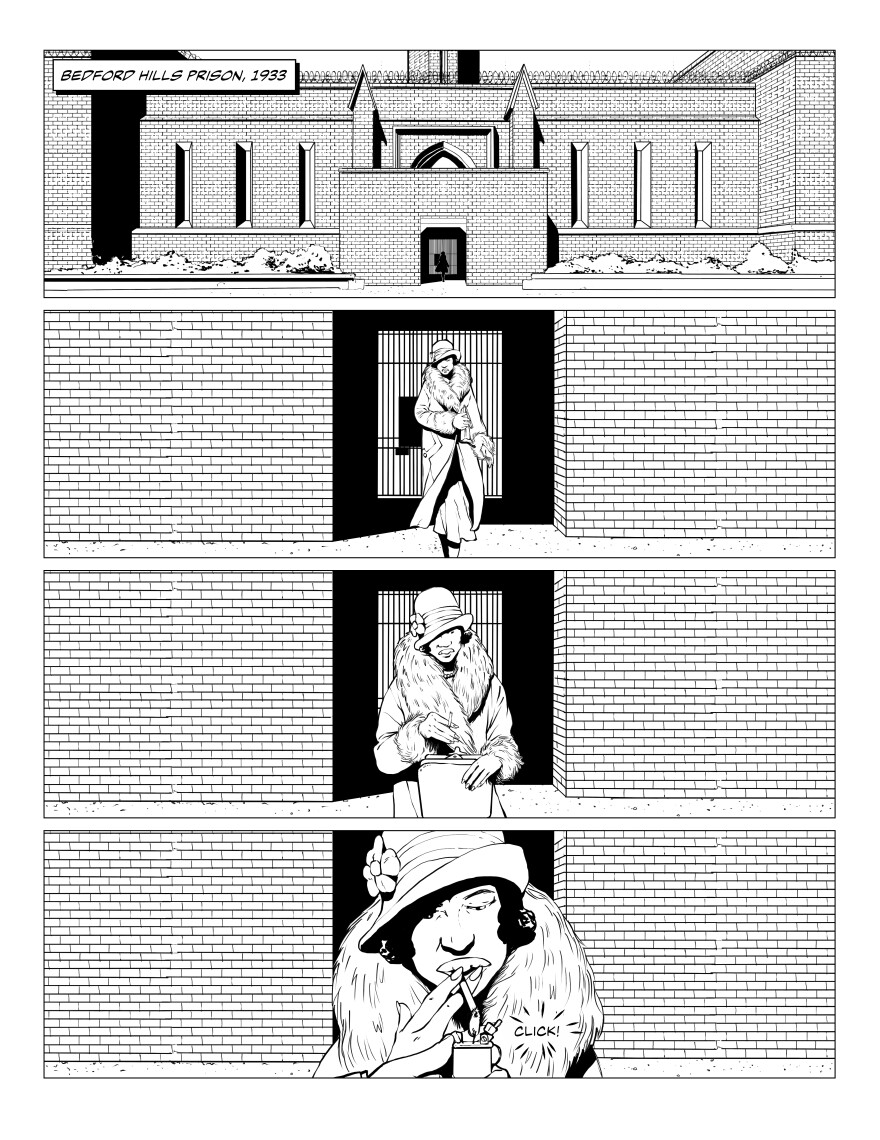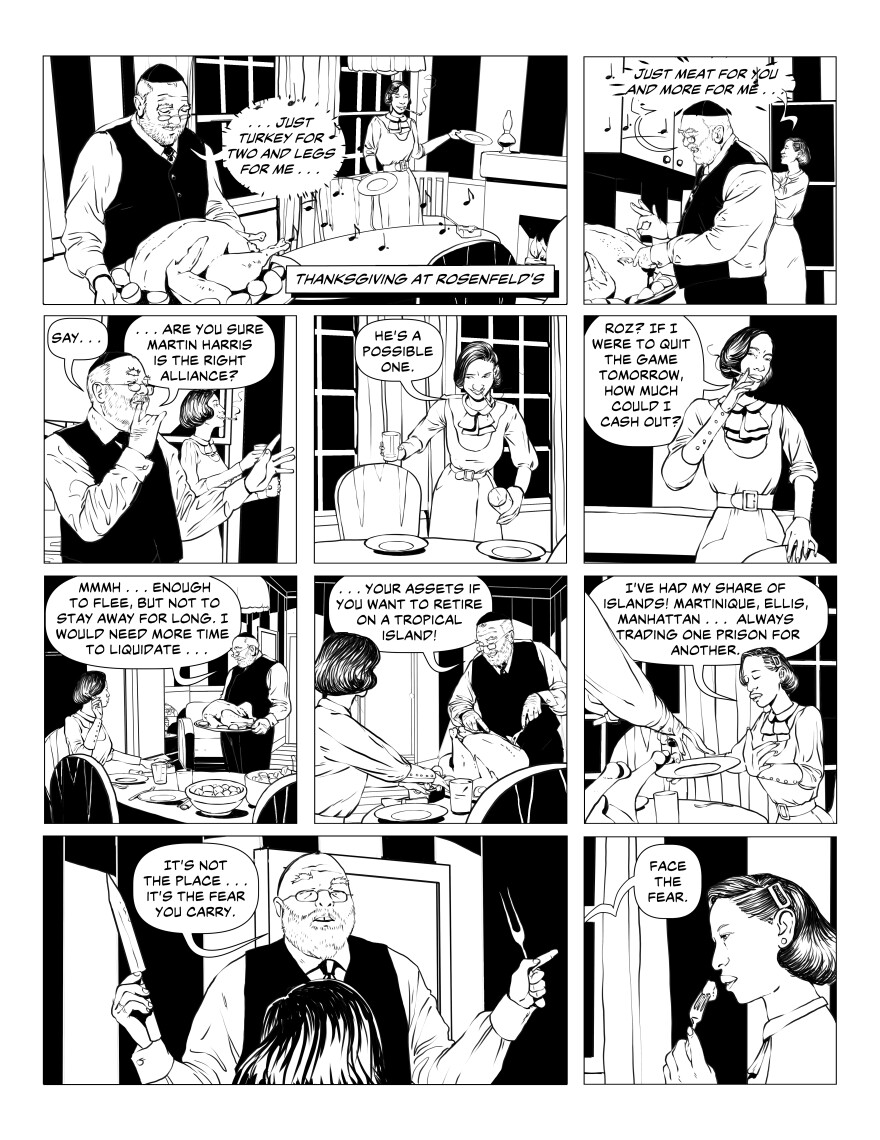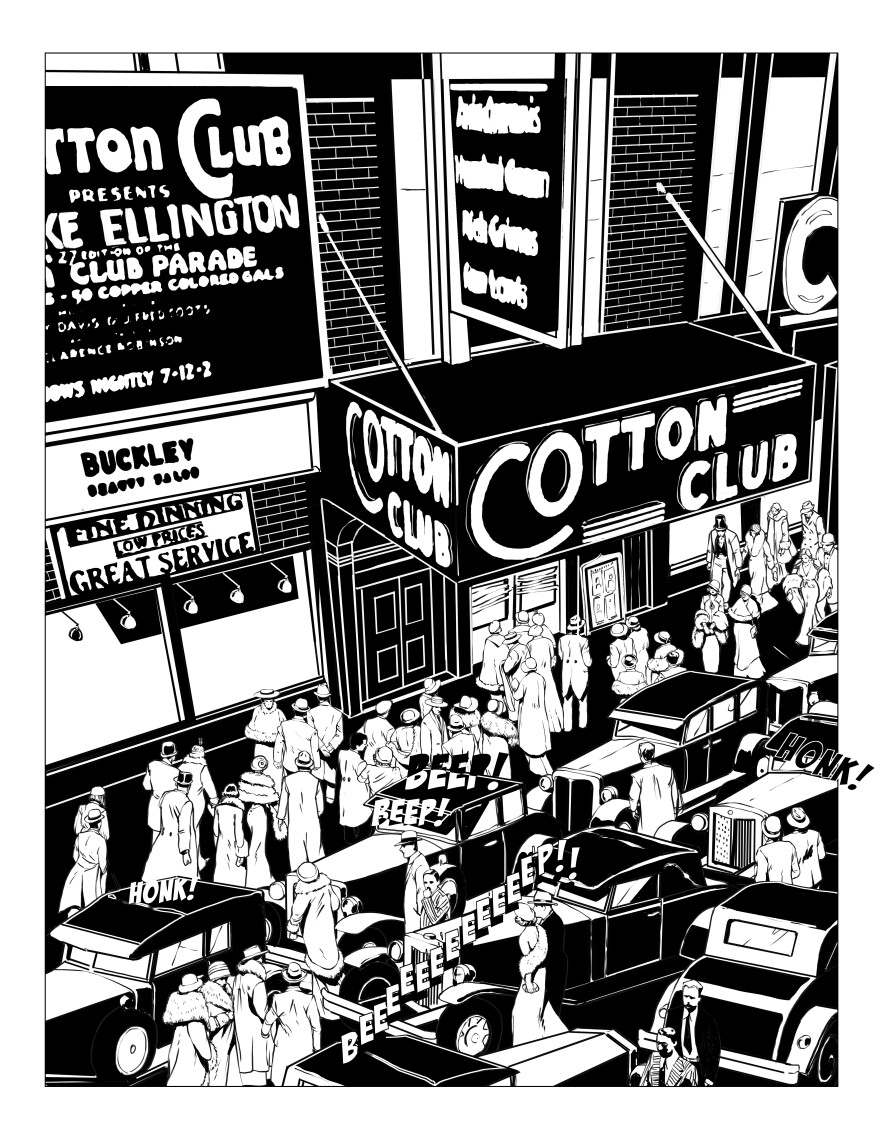Midway through Elizabeth Colomba and Aurélie Lévy's new graphic novel, Queenie: Godmother of Harlem, the viewer is confronted with a harrowing scene.
The protagonist, a young Afro-Caribbean immigrant named Stephanie Saint Clair, is on a bus traveling South from New York City to escape an abusive relationship — when the Ku Klux Klan stops the vehicle. After ordering Saint Clair and all other Black passengers off the bus, the Klan violently assaults them.
This was the first scene that New York-based artist Colomba drew and presented to publishers after she and Lévy, her longtime Paris-based collaborator, began scripting the project three years ago.
"It's a pivotal moment in her life," Colomba said. "She could have been killed easily, and I'm sure they left her for dead. ... And so it's almost like the Phoenix, it's almost a miracle. There's something so powerful to transcend that."

From the proverbial ashes of this moment, Stephanie Saint Clair, who also went by "Queenie," fashioned a new persona, one she would use while running the numbers game — the illegal lottery — during the height of the Harlem Renaissance. Set in 1933, in the wake of Prohibition ending, Queenie: Godmother of Harlem tells her story, which has largely been forgotten until now. Unfolding like a mob thriller, and interspersed with flashbacks to Saint Clair's childhood, the book follows her battle to retain her empire as rival gangs muscle in on her numbers racket.
Colomba and writer Aurélie Lévy did intensive research into Saint Clair's life and the time period in which she lived. But they acknowledge that there were some details they had to fill in. For instance, historians disagree on whether Saint Clair was born in the French Caribbean island of Martinique or Guadeloupe. And it's unclear if she did in fact encounter the Klan. But incorporating that scene allowed the authors to explore the racial dynamics of the time that Saint Clair — who spoke English with a French accent — was up against, as well as her character's naïveté around being a Black woman in America.
"Because she's from Martinique... she thinks she can get away with things. She thinks that she's not going to be seen as an African-American, but as either a French person or as somebody who is from the Caribbean," Colomba said, likening the character's encounter with American racism to a culture shock.
Though Colomba and Lévy included many real figures — including Saint Clair's protégé Ellsworth "Bumpy" Johnson and rival mobsters Dutch Schultz and Lucky Luciano — others are fictional and intended to chip away at different layers of Saint Clair's experience and frame of mind. For example, Lévy and Colomba invented a white Jewish male character named Rosenfeld, who acts as a father-figure to Saint Clair and fronts her business. Lévy explained that this was necessary because, as a Black woman, Saint Clair would likely not have been able to make her own investments.

"We felt a huge responsibility," Lévy said, reflecting on the writing process. "[Her story is] very dense historically. And then we had to find out as much as we could about her and then invent the rest," she said. "It was both a blessing and a curse to have those gaps."
A curse because Saint Clair also carefully controlled her own narrative, so it's impossible to know what is true and what may be embellished. A blessing because Queenie was a larger-than-life gangster and fashion icon.
In 1912, Saint Clair boarded a ship for New York City. By the 1920s, Saint Clair had established her numbers racket in Harlem, and within a few years, she was earning an estimated $200,000 a year, or $3.5 million today.

As her empire and fortune grew, Saint Clair crafted a persona of wealth and power through advertisements she purchased in The New York Amsterdam News, a widely-circulated Black newspaper. The ads featured photographs of Saint Clair in fine clothing and jewelry.
"It was propaganda," Lévy said. "You had to be pretty smart to understand the power of image."
But Saint Clair also used the ads to advocate for Harlem's poor and Black residents. They included mini opinion pieces where she called out police brutality and corruption — often by name — and denounced unlawful searches. In this way, she helped educate her community on their civil and voting rights. Her business was also lucrative because Black people at the time were largely excluded from participating in legal forms of investing. Banks often refused to serve Black people and denied them loans. As a result, many saw the illegal lottery game as one of the few avenues for building wealth.
"I think what blew us away about her was how forward-thinking, precocious and visionary she was," Lévy said. "And whatever she left you, she deliberately left. I think she was very careful about that."

The graphic novel portrays Stephanie Saint Clair as a savvy, brilliant woman with an unusual knack for numbers, and depicts her transformation from precocious child longing to escape plantation life in Martinique into a woman who is at once ruthless and tender.
Lévy and Colomba said they wanted to avoid the pitfalls of the biopic as they told Saint Clair's story. Both were well aware of the burden of representation that often accompanies Black characters who are the first of their kind.
"Unfortunately, when we encounter figures that are people of color, there's a tendency to simplify and to make them reassuring. They either have to be really bad or really good. And it doesn't make them human," Colomba said. "I think by creating a layered character, it humanizes [Saint Clair]. Being complex is just being human."
"And I think nothing testifies more of how hard times were than who you had to be to survive as a woman and all the more as a Black woman. So there's no way she could have been [one-dimensional]," said Lévy.
Colomba said she first learned about Saint Clair through her mother, Lucíanne, a former school teacher and immigrant from Martinique who taught her children about their Caribbean roots, history and heroes.
"My mother was always [making] a point to introduce us to figures from the Caribbean ... who have some power in culture and who she felt [were] important for us to know," Colomba said. "She always wanted for us to know more about our culture."
The moment Colomba learned about Saint Clair, she was immediately captivated and wanted to know more, to understand how Queenie became the person she was.
"When you are born in Martinique and just before the 20th century, your choices in life are slim. And it takes an incredible mind or tenacity to think that you deserve more. And for [Saint Clair], she decided at a very young age... to envision something bigger," Colomba said.
And she and Lévy hope that Queenie's story will resonate with others, too.
"There is something quite inspiring about someone who is so tenacious and decides that the box she was put in is not going to contain her," Colomba said.
"She rewrote her own story. That's how I like to imagine her: as someone who controls the narrative," echoed Lévy.
Edited by Mallory Yu
Copyright 2023 NPR. To see more, visit https://www.npr.org.




